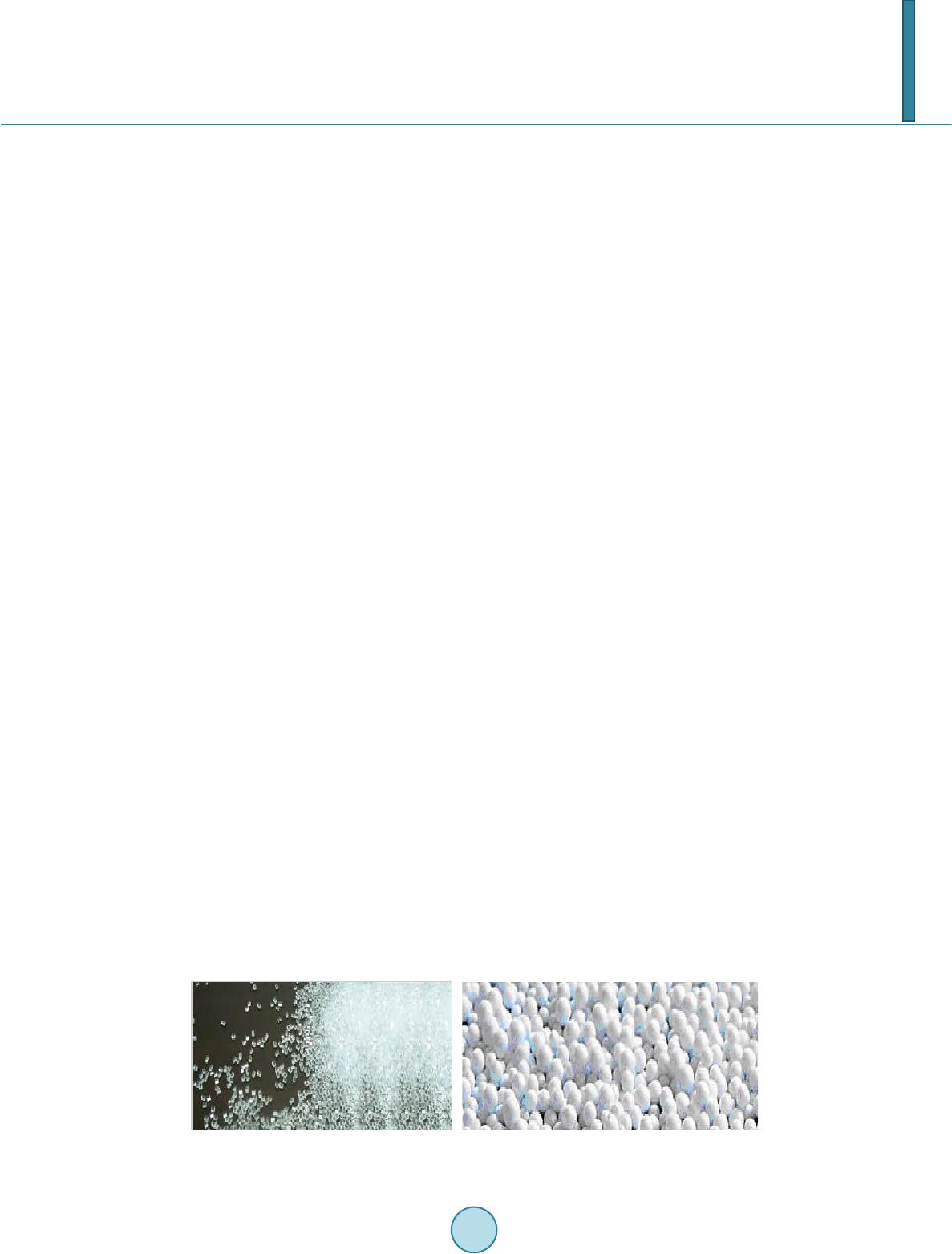
B. A. Kaya, F. Kar
fume at different rates in order to increase the resistance of low-intensity concrete consisting of EPS [6].
In this paper, the thermal and mechanical features of samples produced by granulating the styropor particles
which are liberated as waste material in packaging industry using certain amounts of cement and gypsum bind-
ing agents have been examined.
2. Expanded Polystyrene
Expanded Polystyrene Foam (EPS) is a foam-like-closed-pored thermoplastic material, typically in white colour,
obtained from polymerization of styrene monomer (Figure 1) [7].
EPS products are obtained by means of bulking and amalgamation of polystyrene particles; the bulking has
used for bulking the particles and obtaining foam is “Pentane”. As an organic component, pentane makes sure that
several small pores are formed within the particles and then it changes places with air in a very short time during
and after the production. With the liberation of pentane, inert air is trapped in the abounding (3 - 6 billion in 1 m3
EPS depending on density) number of small pored cells. 98 percent of the material is air and the rest is polystyrene
[7] [8]. Then, it is ensured that the expanded particles rested in special bunkers amalgamate with each other with
the help of the steam inside the mould and that it gains the characteristics of the material. As a result of the
amalgamation of particles, a continuous mass consisting of polygons combined with each other without any space,
which looks like a honeycomb.
-EPS is not poisonous; it does not enter into chemical reaction under normal atmosphere conditions. It does not
consist of chlorofluorocarbon (CFC), hydro chlorofluorocarbon (HCFC) and formaldehyde [9].
-EPS is not a nutrient for bacteria and fungi. EPS production consumes less energy and hence less natural re-
sources compared to similar products.
-EPS is an infinite-life material. Once these materials are used, it is released to the nature as waste. As it is a
recyclable material, and because the materials that it consists do not harm the nature and the ozone layer, it is an
environmental-friend material [7]. EPS does not spoil in garbage and create greenhouse gas, and it does not pollute
the air, water or the ecosystem [9]. EPS is a close-pored material. Due to its very low level of water absorption, its
features do not change even if it directly contacts with water. As it does not dissolve and disintegrate in water, the
pore walls are water-proof. In addition, taking into consideration the fact that EPS will not remain as totally
submerged into water in any building, it can be labeled as “water-tight”.
3. Experimental Study
The new-produced materials, which are the mixture of granule styropor, cement and binding, are subjected to
some tests, such as mechanical and thermal. For mechanical tests some cubical blocks are used in dimensions of
100 × 100 × 100 mm, while rectangular blocks are prepared with the dimensions 150 × 60 × 20 mm for testing
the density, thermal conductivity and water absorption measurements. The samples in the moulds are presented
in Figure 2.
In the samples prepared, the volumetric mixture rates of styropor were determined as 0 - 70 percent for ce-
ment binding samples and 0 - 60 percent for gypsum binding-agent samples; they were cast and left to drying for
the standard 28 days; then the experiments were launched. A shotherm-QTM unit (Showa Denko) which oper-
ated according to the hot wire method of DIN 51046 was used to measure the thermal conductivity of the spe-
cimens. It’s magnitude and sensitivity were 0.02 - 10 Wm−1∙K−1 and ±5% on its scale respectively [10]. The
measurements on three locations of each sample blocks were repeated three times to reflect the average of nine
values. The thermal properties of samples are given in Table 1.
Figure 1. Polystyren and expanded polystyrene [7].